If you live in the Great Lakes region, you know that Michigan is home to a wide variety of wildlife. Michigan is a temperate state with wilderness areas full of forests, lakes, and grasslands in which wildlife thrives.
Michigan is home to 18 different snake species, and only one of them is venomous. This makes Michigan an excellent state for learning about snakes in their natural environment while still being safe.
In this article, we will look at the most common snake species in Michigan and everything you need to know about them. So if you’re ready to get your snake charm on, keep reading to learn more.
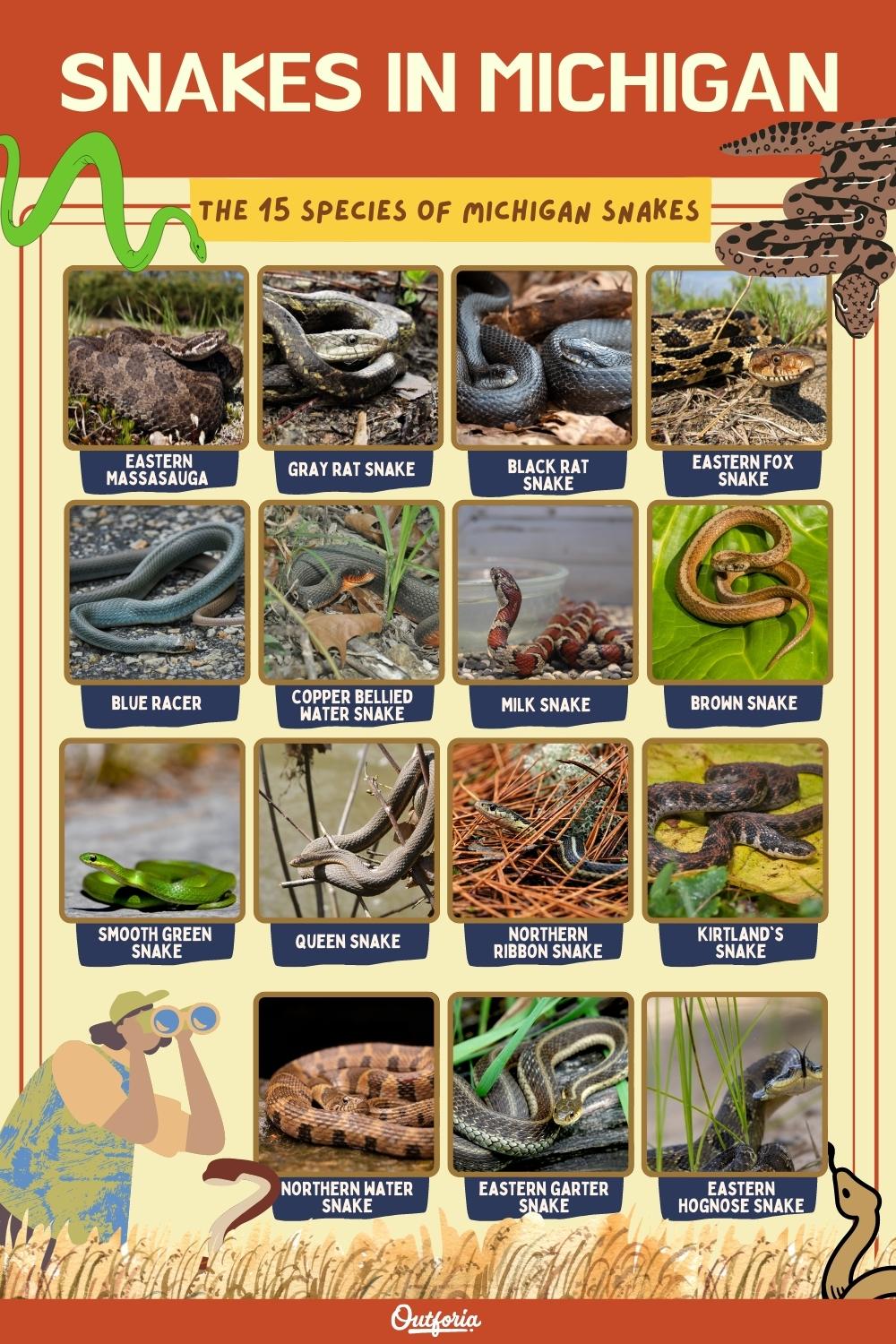
Share this image on your site
<a href="https://outforia.com/snakes-in-michigan/"><img style="width:100%;" src="https://outforia.com/wp-content/uploads/2022/03/snakes-in-michigan-infographic-683x1024.jpg"></a><br>snakes in michigan <a href="https://outforia.com">Outforia</a>1. Eastern Massasauga Rattlesnake
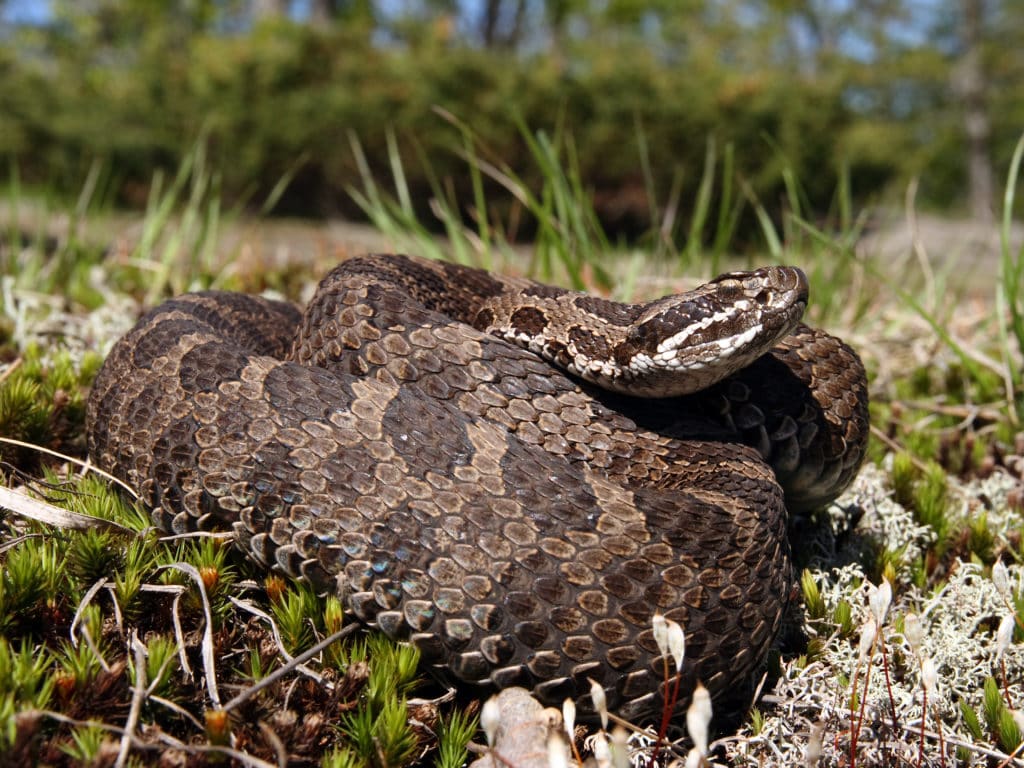
The largest population of Eastern Massasauga Rattlesnakes in the United States is in Michigan. They are present in most counties in the state, including Oakland, Livingstone, Jackson, and Washtenaw. Despite a recent decline in their population, they still enjoy the state’s outstanding habitat.
The species grows to about 18.5 to 30 inches long. They are thick-bodied with a gray or tan hue and a row of large, rounded black or brown blotches. Some even have spots down the middle of their backs and a row of two or three more sports running down the sides of their bodies.
As members of the rattlesnake family, Massasaugas are also venomous snakes and have the distinctive rattler at the ends of their tails.
However, these snakes are timid and try to avoid human interactions by slithering away. As a result, they usually don’t bite unless startled or intentionally provoked.
Their diet consists of small mammals, snakes, salamanders, and birds. Their breeding season is in spring and fall, and females give birth to young ones in summer.
2. Gray Rat Snake
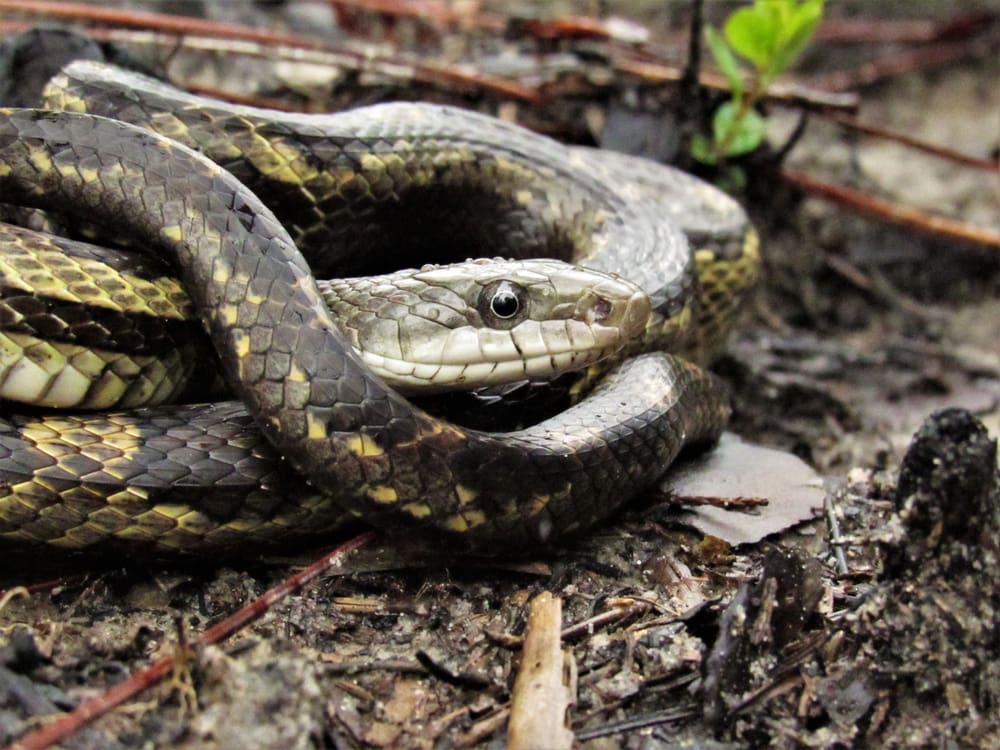
Gray Rat snakes are the biggest snake species found in Michigan, located in the Southern half of the Lower Peninsula. However, their numbers are declining in the state, leading to their special concern status.
The species are medium-sized and grow to about 42 to 72 inches (106-182cm) long, making them one of the longest snakes in Michigan and the entire country. They have a gray hue with darker gray blotches running down their bodies. Their underbellies are light gray with darker checkered blotches.
Unlink other rat snakes. They retain their juvenile hues into adulthood.
Like most snakes in Michigan, Gray Rat snacks are non-venomous and pose no risk to humans or pets. They are not aggressive and try to avoid human interaction, but they are known to bite in self-defense when cornered or harassed.
Gray Rat snakes also rattle their tails to scare predators into thinking they’re venomous.
They like habitats in hardwood forested areas, tree-lined streams, and fields. The snake species is at home both on tree branches and on the ground.
They feed on rodents, frogs, lizards, birds, and eggs. Like other boas and pythons, Gray Rat snakes constrict their prey. They suffocate them to death before swallowing them whole.
3. Black Rat Snake
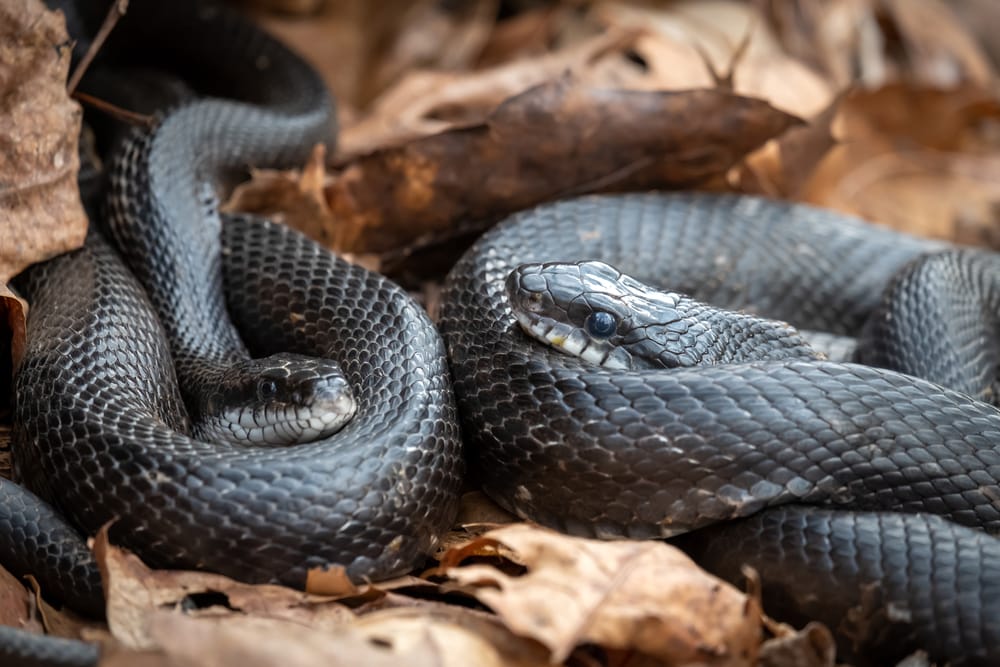
The second type of Rat snake found in Michigan is the Black Rat snake, also known as the Eastern Rat snake. They are present in the Southern half of the Lower Peninsula. Their numbers are also declining in the state and are listed as species of special concern.
Like the Gray Rat snakes, Black Rat snakes are also another species, part of the largest snakes in Michigan and the country. They are medium-sized and grow to about 42 to 72 inches long. They usually start as gray with brown blotches while young and develop into dark glossy black as they mature.
The change of their hue as they grow is one way to tell them apart from their gray cousins. They also have a white underbelly that extends to their chin and lips.
But just like them, they also mimic rattlesnakes by shaking their tails to scare predators and aggressors. It is good for them because they are non-venomous, and their bite does nothing much to protect them from humans.
They feed on rats, hey, probably why they are called rat snakes. But they also don’t mind eating species of frogs, lizards, birds, and chipmunks.
Their breeding season is in May, and females lay 12 to 20 eggs five weeks later, which takes 65 days to hatch.
4. Eastern Fox Snake
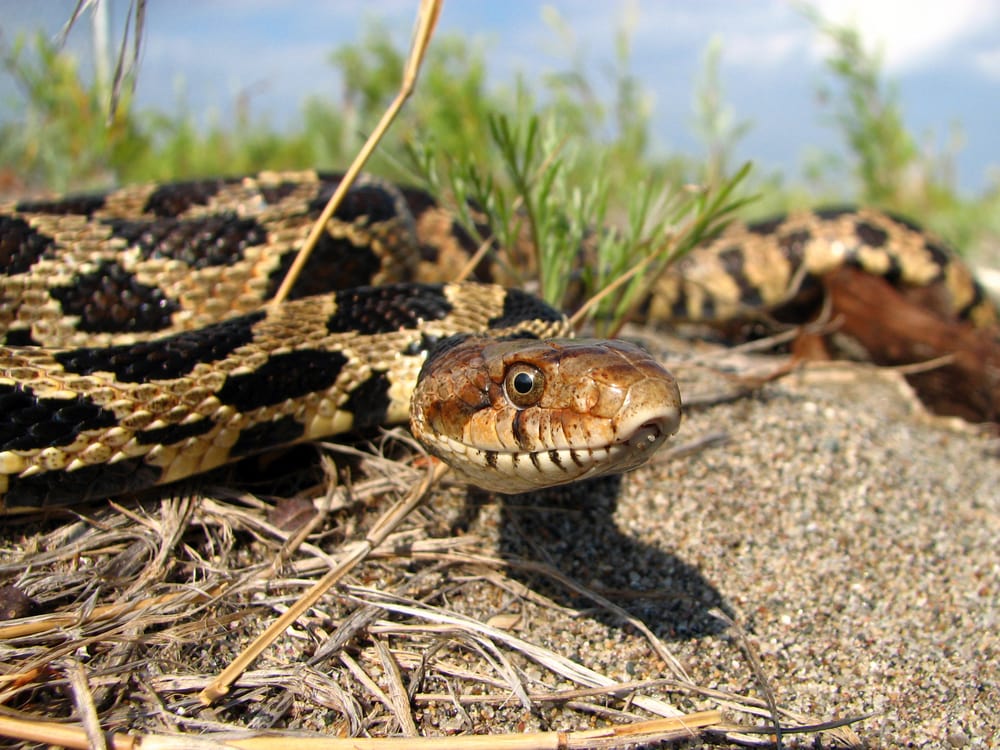
Eastern Fox snakes are exclusively found within the Great Lakes Basin. This species likes habitats around water and are also strong swimmers. It’s not uncommon for these snakes to swim between islands in the metaphoric search for better pastures.
Eastern foxes are large snakes that grow to about 36 to 66 inches (91-167cm) long. The species has bold hues that alternate between large brown and black blotches. Their undersides are yellow with dark checkers.
You will mostly find this species living around wetlands in Michigan, but you can also find them on shorelines and large rivers. They are also adept at living in urban areas, and it would not be a surprise to run into them on your property.
However, they are non-venomous and very docile. They will nonetheless strike at an aggressor if cornered and free the first chance they get.
Eastern Fox snakes are constrictors and feed on small mammals, birds, eggs, and frogs. They help control agricultural pests, and it might not be bad to have a few on your farm. But unfortunately, their numbers are declining in Michigan, and their status is a special concern.
Their breeding season is in June and July, and females lay seven to twenty-nine eggs.
5. Blue Racer
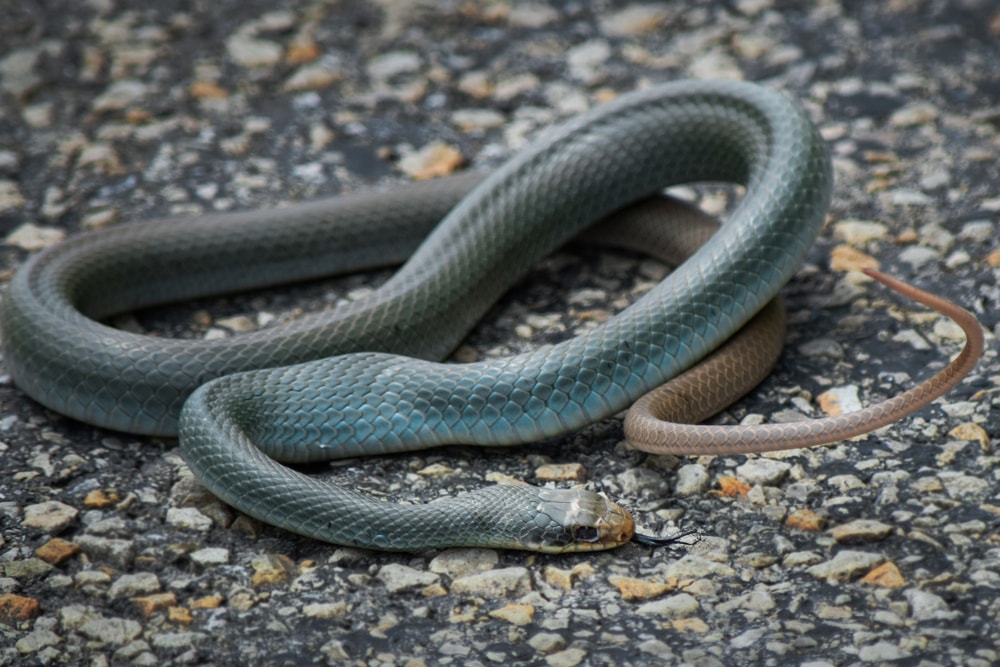
Blue Racers are a subspecies of the nonvenomous Coluber constrictor, colubrid snakes, also called Eastern Racers. You can find them in all the Lower Peninsula of Michigan and the southern part of the Peninsula.
They are medium-sized snakes that grow to about 36 to 60 inches (91-152cm) long. They have smooth, uniformly gray, or blue scales, but the head is darker than the rest of the body. In addition, the neck and the chin are distinctively white, and their underbellies are white or a light blue.
Blue Racer numbers have fallen in Michigan due to habitat loss, and their status is of special concern.
The species are one of the fastest in the state, which comes in handy while chasing down prey and avoiding confrontation. If cornered, they shake their tails to mimic rattlesnakes, and if it does not work at warning threats, they strike aggressively. However, their venom only affects the small prey they hunt.
Blue Racers are terrestrial and arboreal foragers, and their diet consists of crickets, snakes, rodents, and birds.
Their breeding season is in April; females lay eggs in June and hatch in August. Male Blue Racers mature sexually at 11 months but don’t get a chance to mate until they are two. Females mature at two years but may start reproducing at three years of age.
6. Copper-bellied Water Snake
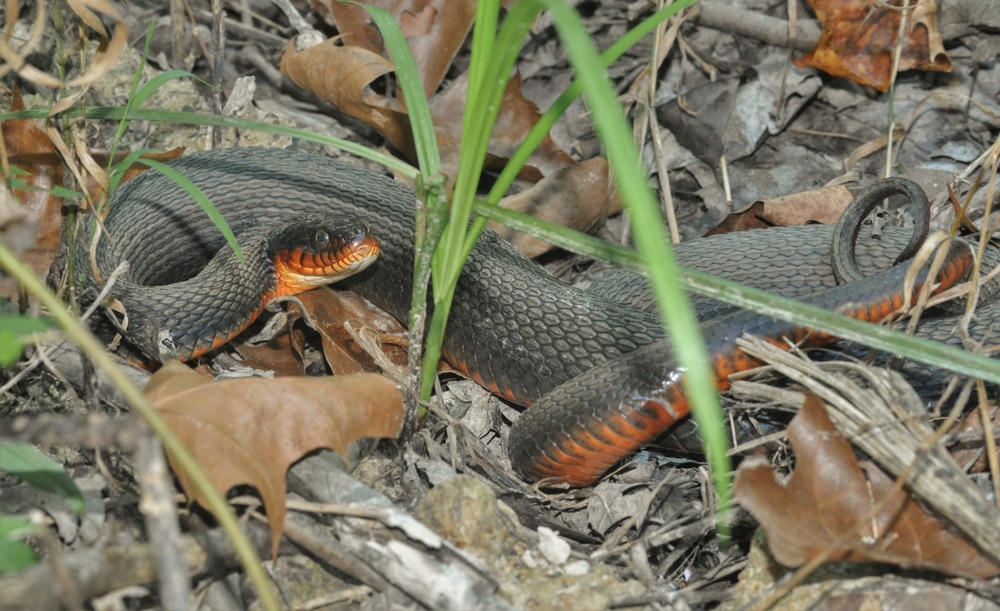
Copper-bellied Water snakes are an endangered species found in Southern Michigan near the Indiana border. They are a subspecies of the plain-bellied Water snakes, and their population has been dropping in the state, and their status is of special concern.
They are considered endangered throughout the country, and conservation efforts are ongoing. It’s illegal to harm a Copper-bellied Water snake, and any sighting should be reported to the DNR Wildlife Division in Lansing.
They are medium-sized and grow to about 36 to 60 inches (91-152cm) long. They have a dark black-bluish hue body and a bright orange underbelly.
Copper-bellied Water snakes prefer habitats in wetlands, swamps, and vegetation next to slow-moving streams. One peculiar behavior about this species is that they like to hang on tree branches next to streams facing the upwash with their mouths open, waiting for a meal.
Although they are water snakes, most of their time is spent on land or hanging on branches, as we’ve seen.
During the fall, the snakes hibernate in crayfish burrows. An interesting thing about this is that the burrows sometimes get fully submerged in water for periods lasting two weeks. However, this doesn’t seem to affect the snakes, and they still emerge unscathed.
The species’ diet consists of fish, frogs, tadpoles, and other amphibians. The breeding season is in June, and females give birth to young ones.
Snake species that give birth are seen as superior to species that lay eggs. This is because their offspring are not exposed to changing weather conditions and the dangers of laying eggs in a nest.
You may also like: 14 Interesting Frogs in Michigan: ID Guide with Photos and Facts
7. Milk Snake
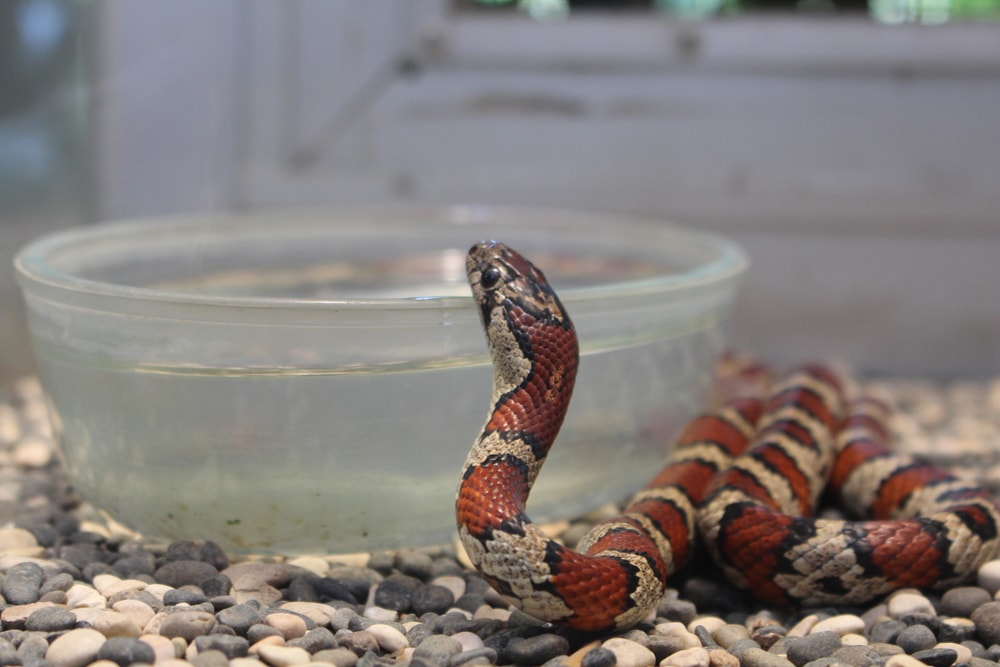
Milk snakes are a subspecies of the Kingsnake that has 24 variants. They are present in both the Upper and Lower Peninsula of Michigan.
The snake species are petite and grow to about 14 to 69 inches (35-175cm) long. They are pretty looking, with distinctive white, black, and red bands running down their bodies.
The non-venomous species are often confused for venomous Coral snakes and killed for fear of bites. But they are not harmful to people and pets and play a crucial role in controlling other species’ numbers.
They are nocturnal and rarely seen during the day. And even if there are few of them in Michigan, you’re most likely to never run into one in the wild.
Milk snakes have a wide variety of habitats, including woodlands, bogs, swamps, marshes, suburban parks, and farms.
Their diet consists of other snakes, rodents, lizards, bugs, birds, fish, and eggs. Their breeding season is in May, and females lay their eggs in July, which incubate for two months, hatching in August to September.
8. Brown Snake
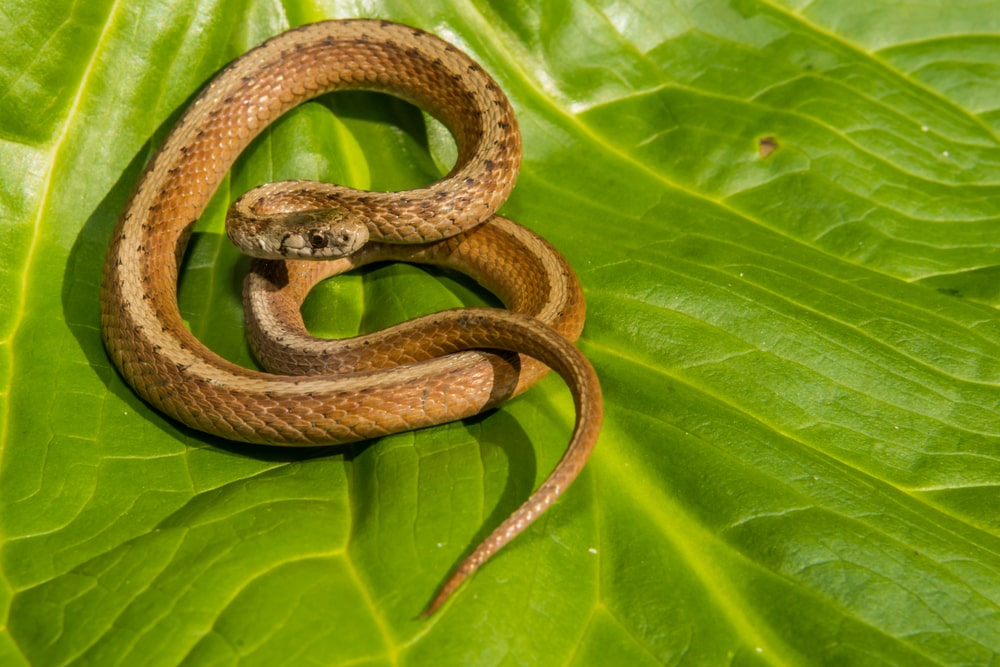
Brown snakes are scarce in Michigan and occur in the Upper parts of the Peninsula. They are more adapted to high elevations in the wooded mountains. Because their numbers have been declining, they are protected throughout the state.
The small petit snakes grow to about 6-13 inches (15-35cm) long. They are either brown or gray and have a light streak lined with black dots on their backs. Their eyes are large, and their scales are keeled.
Brown snakes spend most of their time underground, concealed by vegetation, rocks, and rotting tree stumps. However, during rainy seasons, they emerge and move to higher dry grounds, which is when you’re most likely to come across one.
Their sense of smell is highly advanced, and they use it to communicate with each other as well as hunt during the night.
They hibernate during the winter in communal burrows that they may even share with other snake species.
Their diet consists of earthworms, soft-shelled crabs, snails, slugs, and beetles. Then, just like other viviparous species, they give birth to their young ones. Mating is in spring, and birthing takes place in summer.
9. Smooth Green Snake
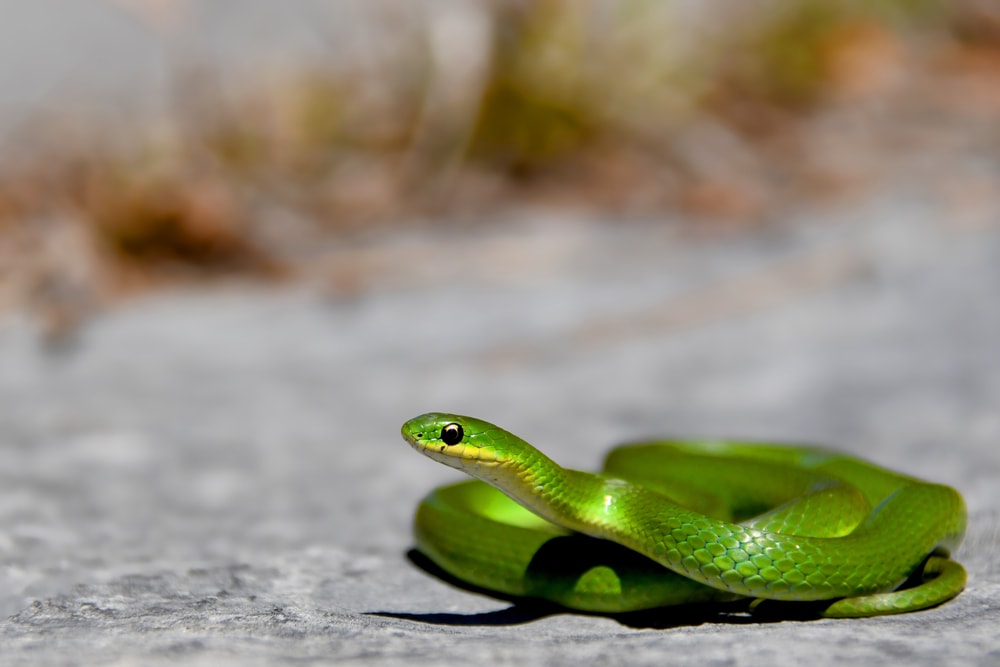
Smooth Green snakes are a species that occurs in prairies, savannas, meadows, roadsides, and empty parking lots all over Michigan. However, they have disappeared in most parts of the southern Lower Peninsula.
The snake species grow to about 12 to 20 inches (30-50cm) long. Their tails are long and take up half or a quarter of the total species’ length. They have smooth dorsal scales and a plain green hue, with a yellow or white underbelly.
When Smooth Green snakes are ready to shed their skins, they turn to an olive green but return to a bright green after shedding. Another differentiating thing about this species is that their heads are slightly larger than their necks, making for a striking silhouette.
These snakes are excellent climbers and spend most of their time foraging on trees. However, they are also comfortable on the ground, and it’s not uncommon to also see them foraging on grasslands.
They rely on their camouflage to evade predators and usually free when threatened. In addition, they are docile, don’t strike, and are comfortable being handled by humans. This makes them perfect candidates for pets and companions for all snake lovers.
Their diet includes insects, spiders, moths, ants, snails, and caterpillars. Their breeding season is in late spring, early summer, and females lay eggs in June through September. The eggs take 23 days to hatch; one of the shortest incubation periods observed in snakes.
10. Queen Snake
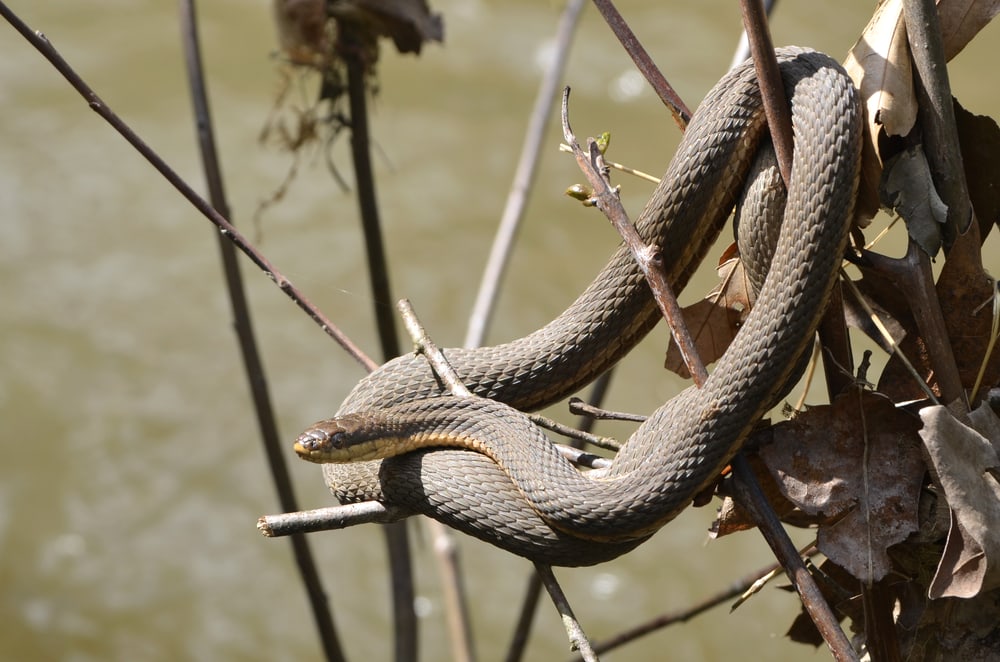
Queen snakes are scarce in Michigan, and only a few are present in the southern two-thirds of the Lower Peninsula.
The slender snake species grow to about 15 to 36 inches (38-92cm) long. They have a gray to olive-brown hue, and some may be olive green. Three dark stripes run down their bodies and two yellow ones on the sides. Their underbellies are yellow, with four brown strips defining their scales.
Queen snakes prefer habitats in rocky streams with lots of small fish, crayfish, and insects to feed on. They never wander far from water but busk in the sun on rocks and vegetation. But because of their small numbers in the state, even avid fishermen may never get to see one in the wild.
Because of their hunting grounds, they have naturally developed protective plate-like scales on their heads and chins. This armor allows them to chase down prey in the rocky stream bottoms.
Staying true to their names, females are larger than males and more aggressive-looking.
The species of snakes hibernate in groups in burrows near water. Unfortunately, their main prey, the catfish, turns the tables on them and preys on young Queen snakes during this time.
Females Queen snakes reach sexual maturity in three years while males take two. The mating season is in spring and autumn, and the ovoviviparous snakes give birth in summer.
11. Northern Ribbon snake
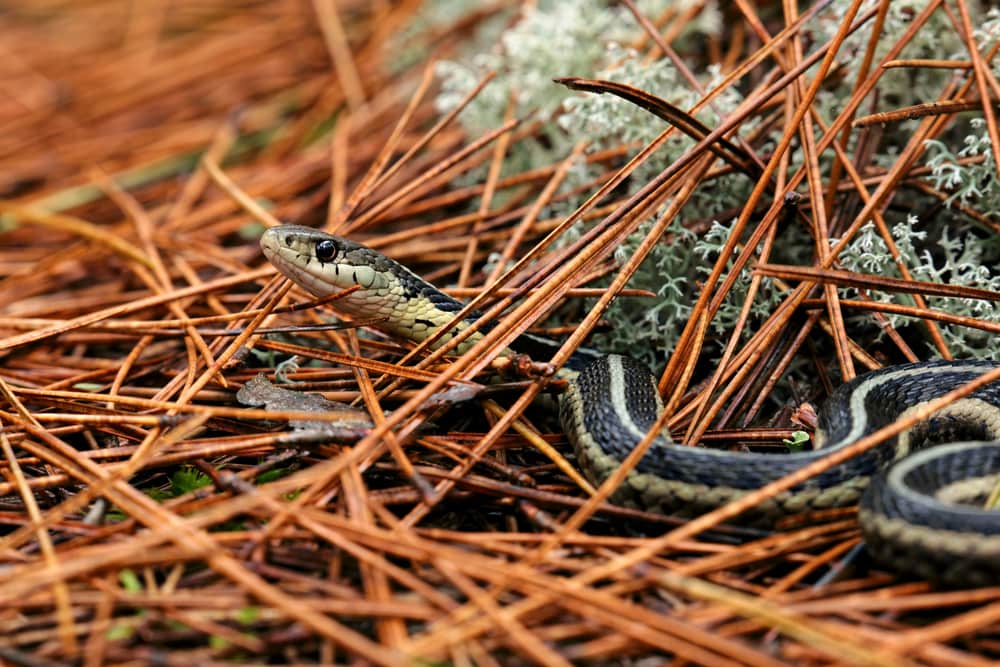
Northern Ribbon snakes are part of the larger Garter snake species. They are common in the lower peninsula of Michigan.
The species grows to about 18 to 38 inches (27-96cm), and a quarter of their length is usually their tails. They have three yellow or white ribbons on their bodies with a dark brown background. Their underbellies are green, yellow, or white.
One way to differentiate Ribbon snakes from other Garter snakes is the black scales on their lower “lip” and white mouth.
They are not aggressive and rely on their camouflage to hide from predators. Nevertheless, they are preyed on by birds, other snakes, and large amphibians.
They are found in aquatic habitats with high vegetation cover, including marshes, swamps, ponds, and lakes. Their diet consists of worms, small insects, frogs, and small fish. Ribbon snakes tend to stay away from warm-blooded prey.
They breed in spring, just after their hibernation period, and give birth during the summer. Their litters are seven to twenty-seven baby snakes that mature in two to three years.
12. Kirtland’s Snake
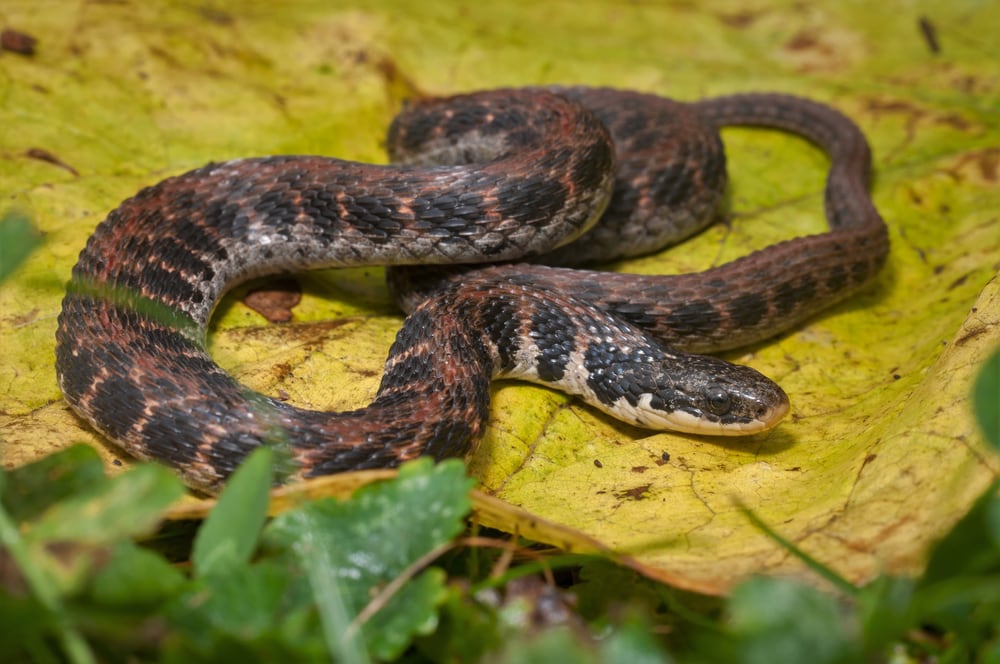
Kirtland’s snakes live in Michigan’s fens, meadows, and tamarack swamps habitats. You can find them in the southern parts of the state near the Indiana and Ohio borders. Their range also stretches North to Lake Michigan.
The snake species grows to about 12 to 18 inches (30-45cm) long, and they have a reddish-brown hue. They also have four rows of black blotches on their backs and a black head. Their underbellies are pink or red, with black spots running the length of the body.
Their rugged looks make them look intimidating, but they’re harmless like most snake species in the state. They are timid and avoid human interactions.
Their numbers in Michigan are critically low, and their status is of special concern. As a result, they are protected by the Michigan Department of Natural Resources.
Kirtland’s snakes use crayfish burrows to hibernate and escape the summer’s heat. They are not confrontational and prefer to run than fight. Instead, they coil up into a tight disc to confuse predators when threatened, and if it doesn’t work, they uncoil and free.
Their diet consists of earthworms, slugs, frogs, and salamanders. Their breeding season is in spring, and females give birth.
13. Northern Water Snake
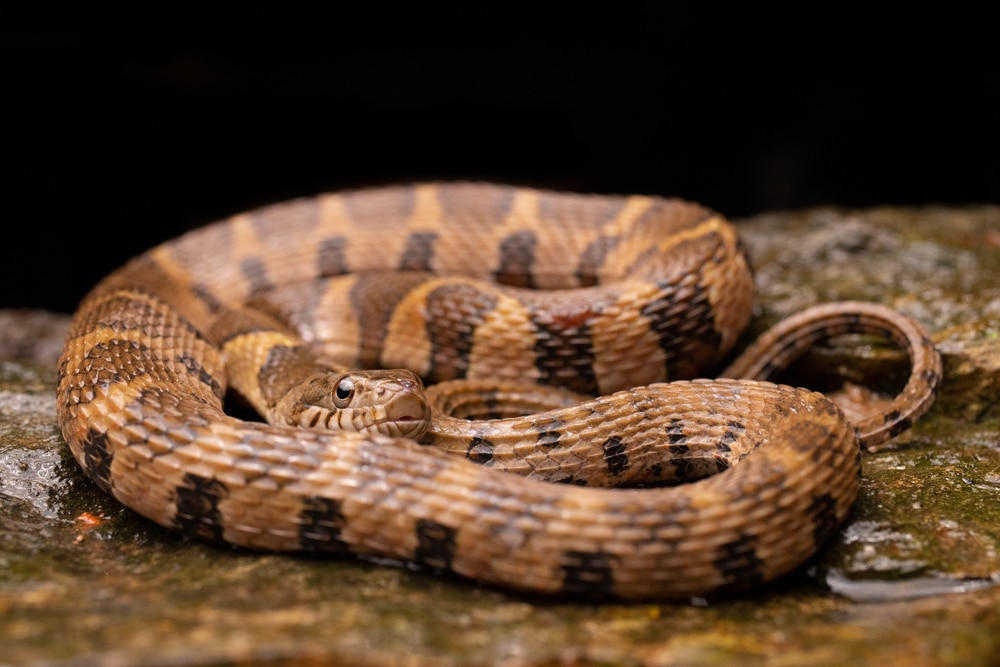
Northern Water snakes are the most common water snakes in Michigan. Found throughout the Lower Peninsula and the eastern Upper Peninsula. They prefer habitats in slow-moving water or still water, such as ponds, lakes, marshes, and streams.
The large snakes can grow to about 24 to 54 inches (60-137cm) long. They are brown or gray with dark bands or blotches. Their underbellies are reddish with radish half-moon markings. Some snakes also have orange bellies with black blotches.
Human killings have reduced the numbers of this species in the Michigan region, but thankfully there are still plenty left in the wild.
They are commonly confused with venomous cotton snakes but are harmless and don’t carry venom.
You will find them basking on rocks and tree trumps near water sources. They are also strong swimmers and good fishers.
They live a solitary life and are only social during spring and fall in the breeding season. This is just after their hibernation, and females give birth to 12 to 36 baby snakes later in August.
Their diet includes different types of fish such as brook trout, sunfish, minnows, and catfish. They also feed on crickets, frogs, toads, and bullfrogs.
14. Eastern Garter Snake
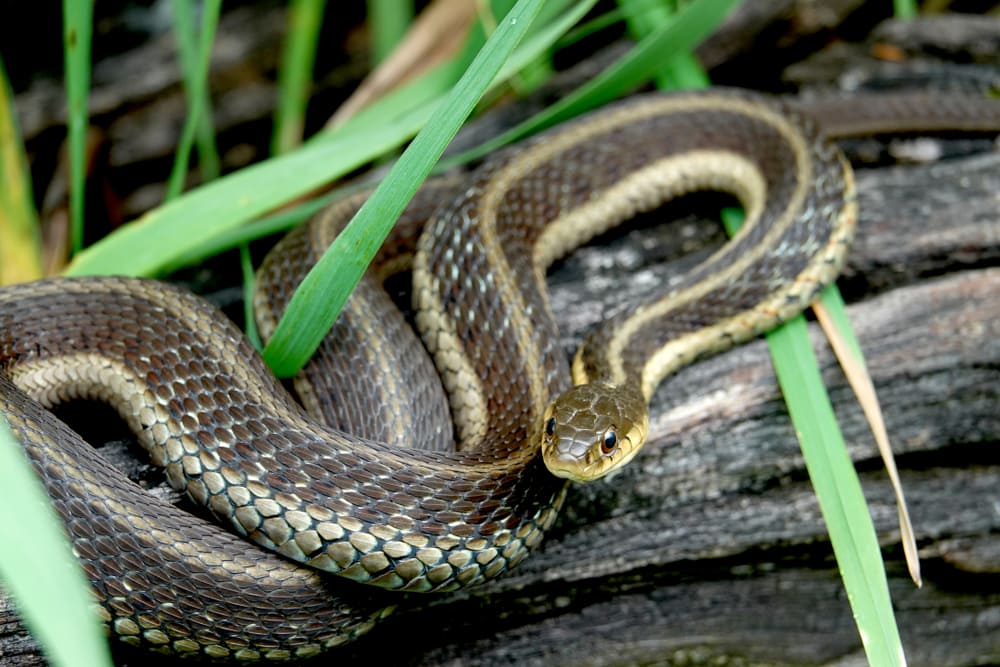
Eastern Garter snakes are the most common snake species in Michigan. Unlike other Garter snakes in the state, Eastern Garters are found near human settlements in urban and suburban areas. Also, unlike most snake species, Eastern Garters don’t seem to mind humans.
They grow to about 24 to 48 inches ( long and have a gray, brown, or green hue. Three stripes run down their backs and may have dark spots (60-122cm) between the rows. One unique thing about this species is that they have a red tongue with a black tip.
They like to take cover in debris or other openings in foundations and empty lots. Eastern Garters are active during the day and night, and you will find them foraging at all times of the day.
They are fast and try to get away from predators, but they will strike in defense if cornered. Their bites are not harmful to humans but have been known to produce allergic reactions in some people. If the threat persists, they release a foul musk that puts off even the hungriest of predators.
The species’ diet includes toads, frogs, slugs, and lizards. They breed in spring, with many males trying to hump a single female in a mating frenzy that creates a mating ball. Females are ovoviviparous and give birth to a litter in late summer.
15. Eastern Hognose Snake
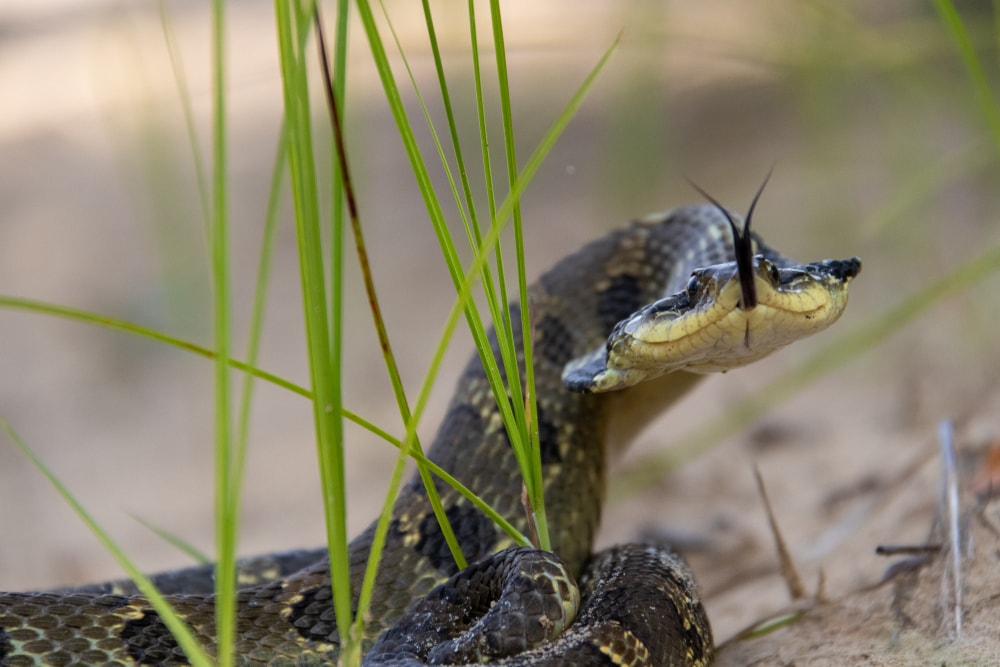
Eastern Hognose snakes occur in the Lower Peninsula and Menominee County in the UP regions of Michigan. They prefer habitats in sandy forests and open fields.
The girthy snake species grows to about 20 to 40 inches (50-101cm) long. They have varying color schemes ranging from red, green, brown, and black. They might also have patterns, blotches, or plain colored. It’s difficult to identify them with a specific hue or pattern, but their unique, almost flattened bodies make it easy to distinguish.
They have keeled scales that have a ridge down the center, and their underbellies are a lighter hue compared to the predominant body color.
Eastern Hognose snakes are tamid and slow-moving. They are differentiated by their hog-like noses that they use to burrow in the sand.
They are active during the day and will do their foraging then. They feed on amphibians like toads and even toxic species. But they have a natural resilience and are not affected by the toxins.
Thor breeding season is in April and May, and females lay eggs in June, which hatch after 60 days in September.
You may also like:

Snakes in Oklahoma | Snakes in Massachusetts | Snakes in Florida | Snakes in PA | Snakes in Georgia | Snakes in Texas | Snakes in New Hampshire | Snakes in Utah | Snakes in Virginia | Snakes in Tennessee | Snakes in Colorado | Rattlesnakes in Arizona








